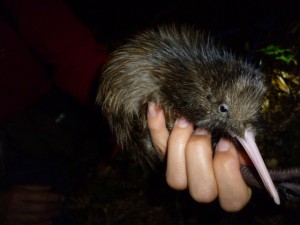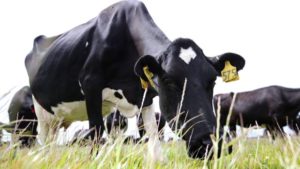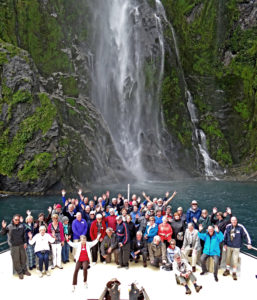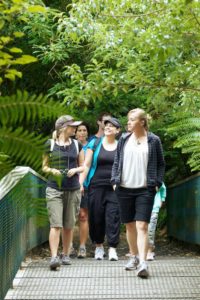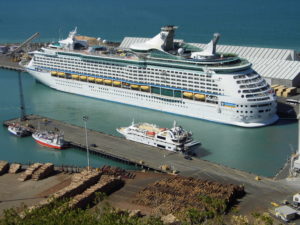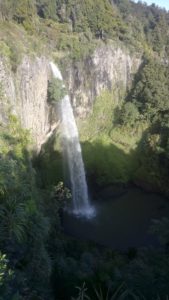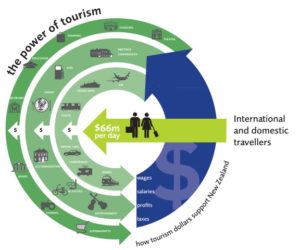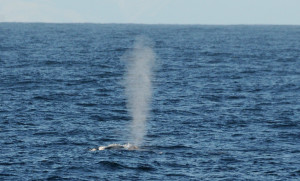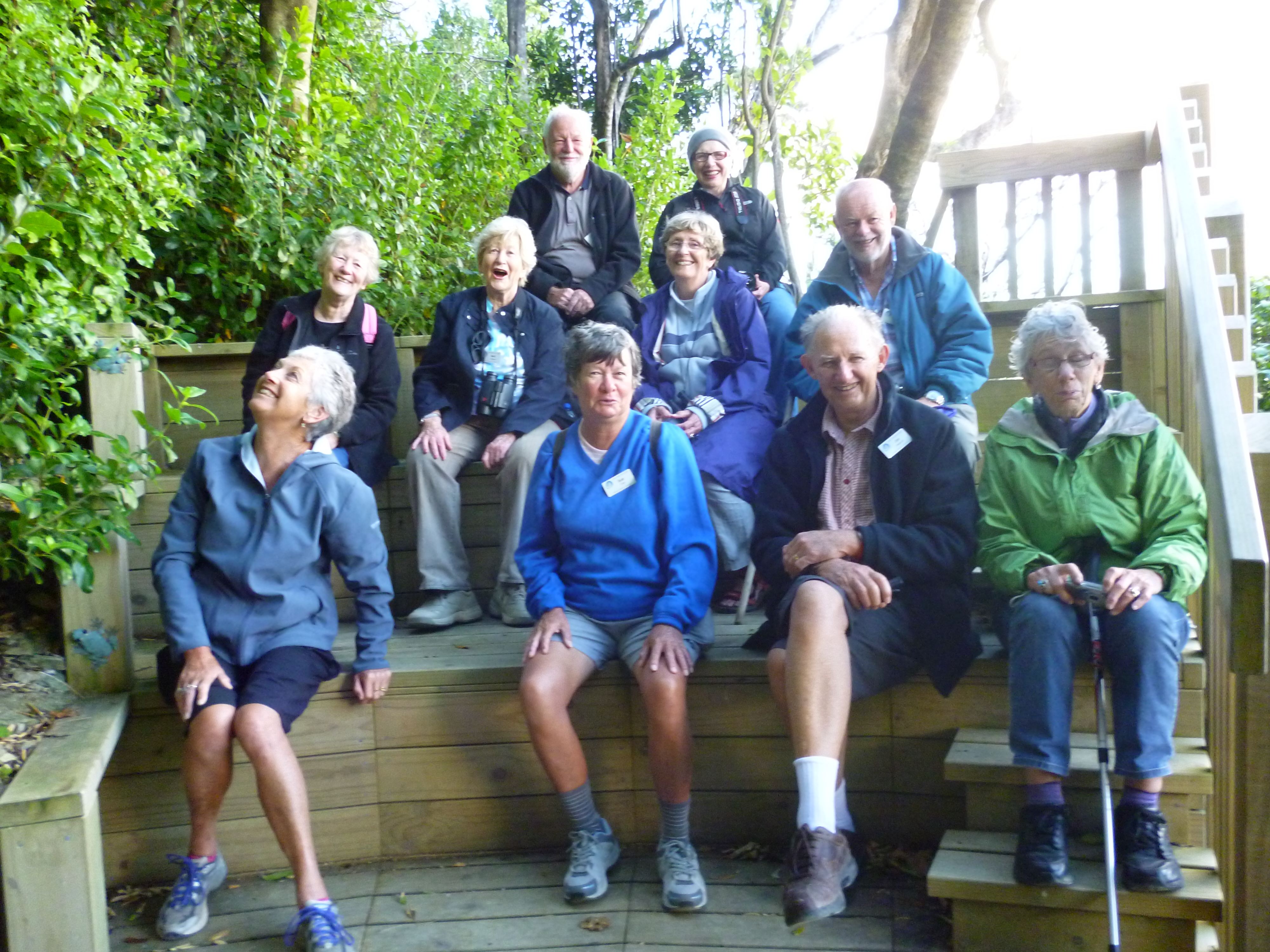Posts Tagged ‘nz inc’
NZx: November 26th Sustainable tourism
Naumai
It was heartening, if with a strong sense of deja vu, to see the tourism industry (re) start a process to ensure economic, environmental, host community, and visitor satisfaction and engagement, drive the future of sustainable tourism in New Zealand.
We have of course been here before with initiatives such as Green Globe and Environmental Plans. These initiatives, while driven locally, had a global context and more importantly measured success towards publicly stated goals. Poor decision making and lack of integration resulted in a lost opportunity for the industry and the weakly positioned environmental initiative in the form of the original Qualmark.
You can read more about this current sustainable tourism initiative here: http://sustainabletourism.nz/assets/Uploads/FINAL-TIA-SUSTAINABILITY-BOOK-17.0-web-spreads.pdf
 In a sense there’s nothing really new here. The approach is the industry’s response to rapid growth, increasing public concerns about international visitor numbers, effects of tourism on local communities and the environment and ensuring tourism businesses are economically successful. All sensible and admirable goals – if not a little overdue.
In a sense there’s nothing really new here. The approach is the industry’s response to rapid growth, increasing public concerns about international visitor numbers, effects of tourism on local communities and the environment and ensuring tourism businesses are economically successful. All sensible and admirable goals – if not a little overdue.
Over the years such initiatives have been met with initial support, particularly amongst the larger tourism entities – check out the current list of supporters here. Many other entities will undoubtedly sign up, driven by a mixture of opportunity, marketing push/pull, desire to stay ahead of the pack and some through genuine commitment.
As Fonterra has found their nearly tw0 year old public relations campaign has meet with mixed reaction. Some see through it as typical pr speak , while others believe it has a role to play in ensuring the dairy industries future in an increasingly skeptical New Zealand.
While not suggesting the campaign is no more than tourism’s version of pr speak it will take more than this initiative to make a difference. More needs to be done with both Central Government and Local Government to ensure all parties commitments are in alignment.
Of course it is local communities that drive a lot of input into both forms of Government. We have previously commented on tourism social license to operate in previous blogs.
The 14 commitments are big on the right words but light on measuring and reporting on success, other than financial.
Hopefully this tourism initiative will be both sustainable, wide reaching and effective!
Ka kite ano
NZx – May 30th: alternative facts
Naumai
The recent public debate (which is full of alternative facts) about Auckland’s proposed bed tax highlights the gaps between local and central government funding, and the lack of understanding as to how tourism adds benefits and costs to all aspects of the New Zealand economy.
Many people have a view on the tax but only a few reflect the facts. Tourism Industry Aotearoa, Chief Executive Chris Roberts says the commercial accommodation sector receives just 9% of the total visitor spend in Auckland source (Ministry of Business Innovation and Employment).
“The original targeted rate proposal was for 330 commercial property owners to pay the full cost of Council tourism and event promotion. The cost of that promotion is currently shared by every ratepayer in Auckland, residential and commercial.
“It is still not the fair share that Mayor Goff repeatedly talks about. The small targeted group receives around 7-8% of the total visitor spend in Auckland, and yet is being asked to pay 50% of promotion and event support.”
We note that in 2014 international and domestic visitors spent $ 66 million per day in New Zealand communities. Thats a fact.
Shamubeel Eaqub also believes the plan offers no clear alignment between costs and benefit. You can read his original article here http://www.stuff.co.nz/business/opinion-analysis/93272191/shamubeel-eaqub-bed-tax-reveals-local-government-flaws
With 2017 being an election year , one assumes there will soon be a large amount of alternative facts in circulation. Tourism will need to make sure it’s voice is united, clear and more importantly heard.
NZx May 18th: differentation
Naumai
“Here I am a weather beaten and world weary traveller at the end of my journey of discovery through New Zealand.
Like everyone these days I’d ‘ done my homework before I came. I knew NZ isn’t 100% pure and untouched. It has one of the worlds worst records in terms of biodiversity loss. The quality of its streams and rivers is deteriorating. The loss of habitat over the last 300 years is sadly impressive.
I did come expecting to see and hear the stories of this place. I already knew that the introduced possum had caused significant damage to both habitat and endangered species. What I didn’t expect to hear was this story repeated at almost every location throughout my travels in wild New Zealand. I get the possum story and am frankly so over it! “
As providers and kaitiaki of NZ Inc we need to get our act together. We need to provide genuine, themed, regionally focused and integrated stories for travellers throughout New Zealand.
We don’t need to repeat the same story at every location.
We should focus on regionally based story telling that focus’s on the points of difference of that place.
Our visitors get the possum (and other repeating themes) story. The big picture NZ Inc stuff doesn’t need repeating at every location…!
Ka kite ano
Malcolm
NZx March 9th: guiding 101
Naumai
It has been great to get out and spend the last month travelling the country on the Oceanic Discoverer.
As well as getting the opportunity to lecture, guide, interpret and spend time with people from all around the world, you also get to experience NZ Inc from a visitors viewpoint.
We have previously posted on the need for interpreters to do the basics well. Essentially that is to have: well themed, entertaining, engaging and correct interpretation delivered in a passionate way to their visitors.
Over the last four weeks we have accompanied our visitors on some experiences offered by some of NZ’s leading tourism businesses. They do a great job of essentials such as: marketing, providing good equipment, and partially delivering on the promise.
Some don’t do a great job in the essential areas of visitor experiences. particularly guiding/interpretation. Specifically we endured: our guide continually standing at the front of the group and not being heard, our driver twice leaving us in a small van to carry out some personal business, a monotone lecture from another driver on bees which had nothing to do with the experience on offer and our guide (while knowing her material) being less than engaging.
Visitor’s on the Oceanic Discover come from all around the world, travel a long way and spend a lot of money to experience NZ. They have a great experience on the ship but some of our smaller land-based operators are delivering a less than 100% visitor experience.
Ka kite ano
